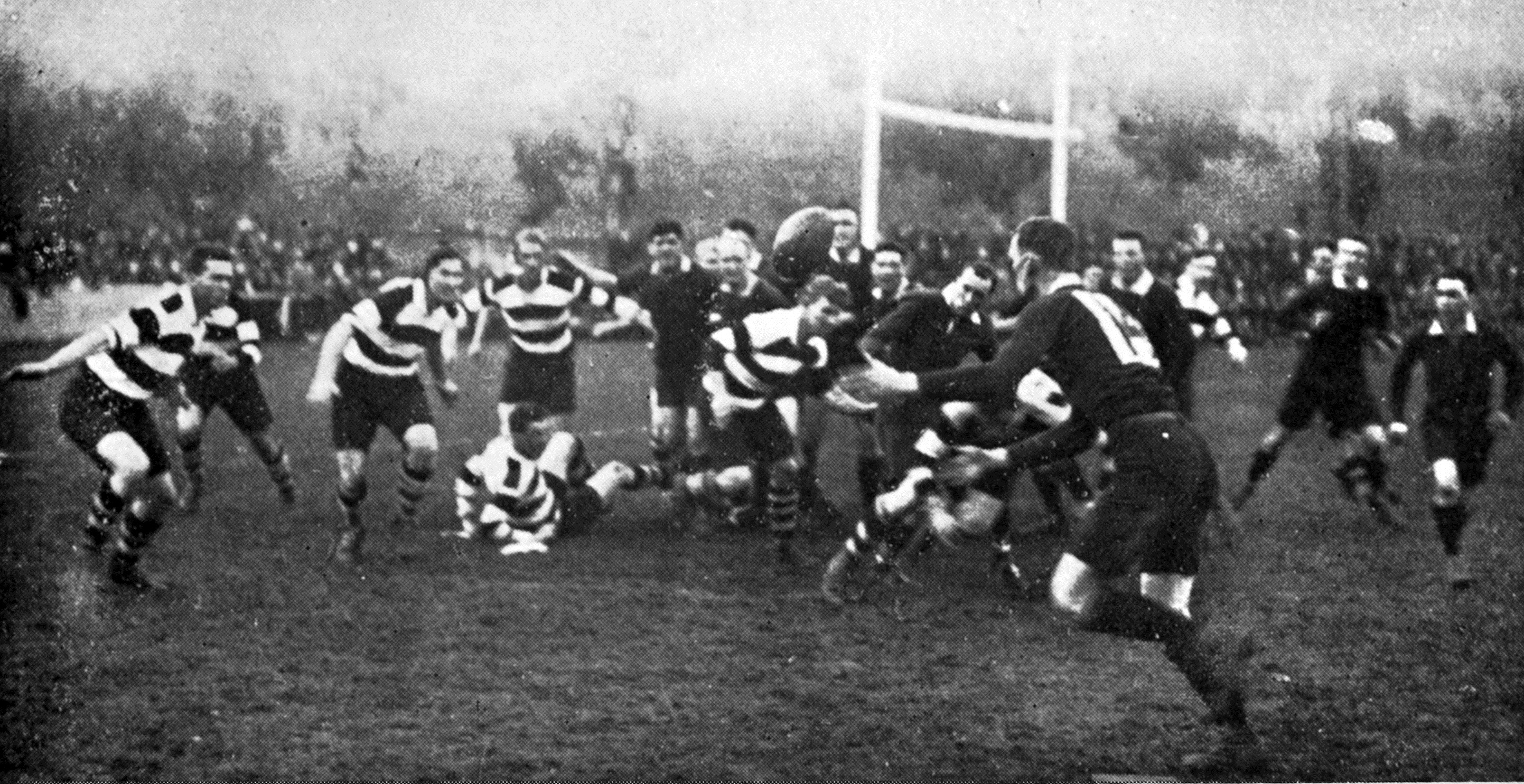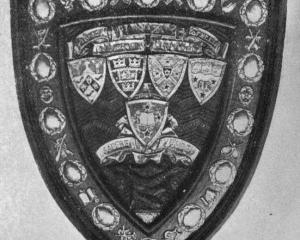
The forwards were well tested in the match. The Blue forwards played a much better game than they put up against Canterbury, and it was well they did so, as they were opposed by a solid, hardworking pack. The Blue forwards demonstrated that they have not lost the art of dribbling, and Duncan, Munro and Sonntag led some fine rushes. The Blue forwards were tiring towards the finish, and were very slow once or twice in getting back to save their rearguard when they were deep in trouble through faulty handling.
The Blue forwards had a little the better of it in the first half, but the Colours well held their own in the second. Both the Colours’ tries were obtained as the result of forward rushes, whereas the two tries registered by Otago were scored by the backs. Stewart’s try was a brilliant effort. Jammed on the line as he was when he got the ball, his chance of getting about 25 yards to the line seemed hopeless.
He, however, sidestepped several opponents and scored near the corner amidst prolonged cheering. Why do the Otago backs not play more to Stewart, and give him fairer openings? If they had him in Wellington football they would "feed" him all day. The first try, scored by the visitors, although thoroughly well earned, was not without the element of luck. Fea ran round in front of a Colours’ rush, and fell across the line with the ball between his legs. Gemmell then put his hand on the ball and was awarded a try. I had a fairly clear view of the incident, and although some of the spectators argued that Fea did touch the ball down I did not see him put his hand on it. An Otago forward, on the other hand, assured me that the ball was forced, and that if he had bad any doubt about it he could have forced it himself. Otago seems to have hard luck as regards winning the Ranfurly Shield. The present holders (Hawke’s Bay) declined to accept the general challenge from Otago for the shield, issued before Hawkes Bay captured it from Wellington.
Built for the railway ahead
The uses to which the humble Ford can be put are many. The latest in New Zealand is its employment as a rail car, a West Coast firm having tried out converted Fords on sawmill tramways. These cars are used for conveying miners or sawmill employees from their places of residence to their daily work. The capacity of the car is 16 men, and the saving in time is considerable. The car covers in 15 minutes the distance which took the men one and a-half hours to do on foot.
The use of these cars enables the men to live further from their work, and the necessity of living in bush camps is avoided. Instead of having to depend on a turntable to turn the car round when the terminus is reached, each car is constructed with a system of jacks and turntable which enables it to be swung round on the track by one man in a few minutes.
Southland’s best hen trout
The curator for the Southland Acclimatisation Society told a Wyndham Herald reporter that he gets the best ova from trout secured in Stewart Creek, Seaward Downs, emptying into the Mataura River over a mile below the Island bridge. It is an ideal stream for the purpose, and no doubt would be favoured by sea-run trout.
— ODT, 14.8.1922












